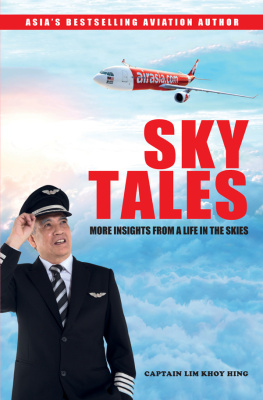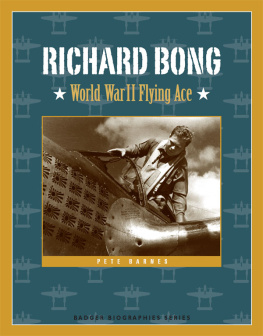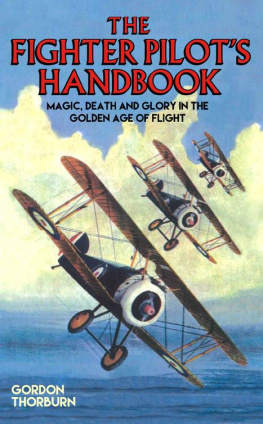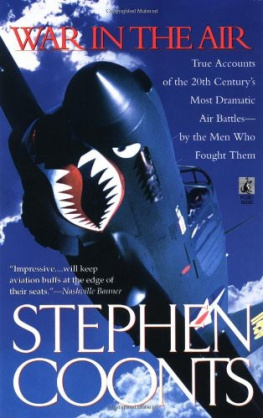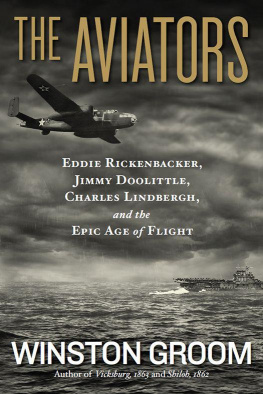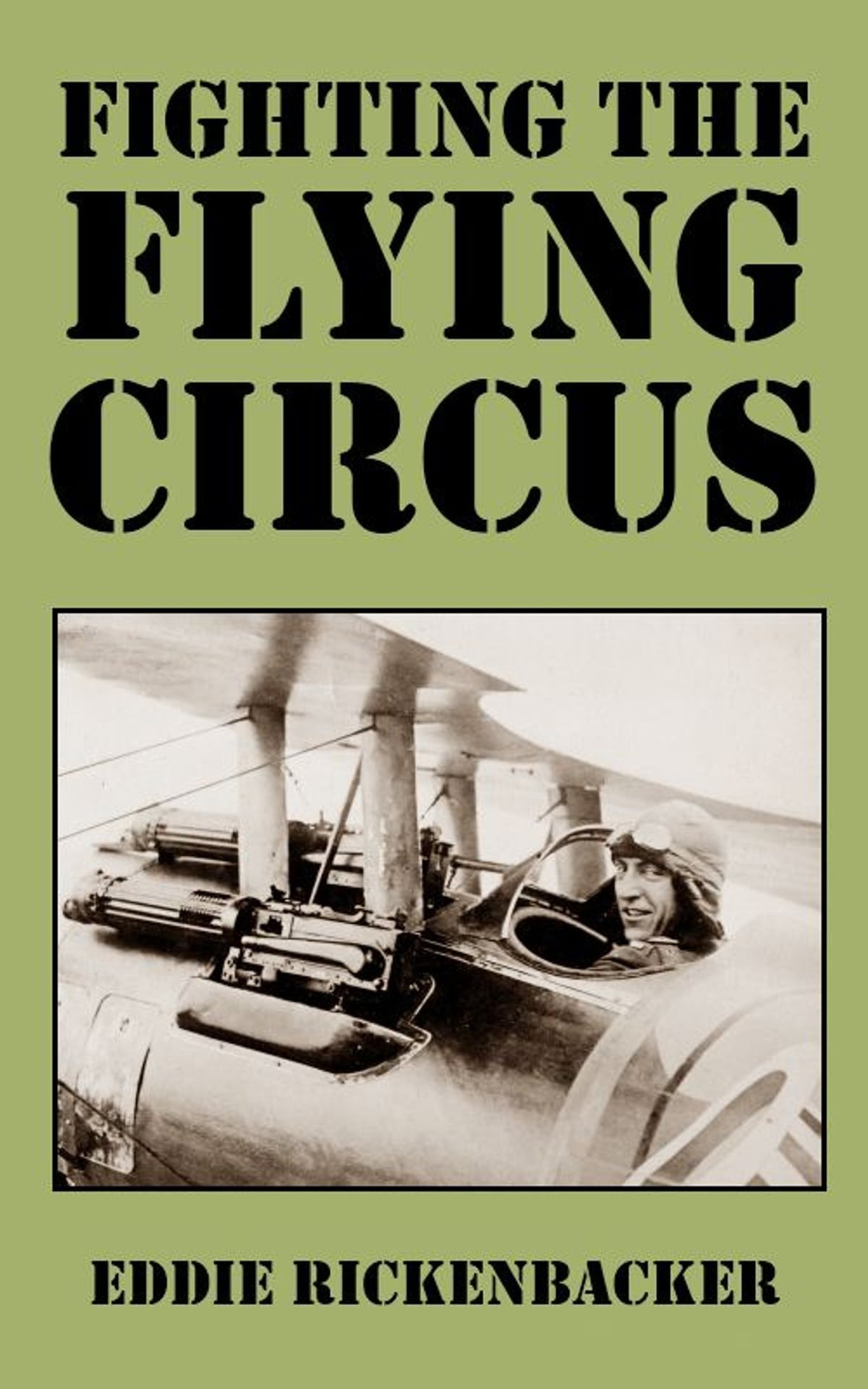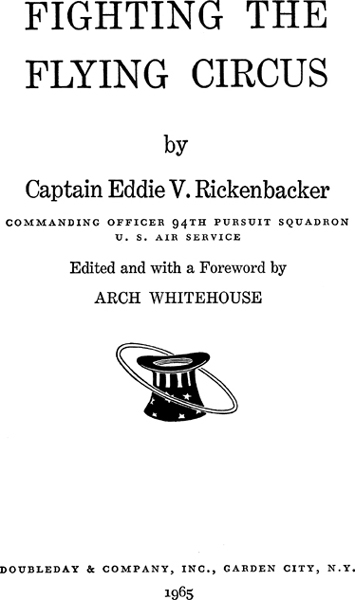FOREWORD
On November 6, 1930, twelve years after the close of hostilities, President Herbert Hoover presented the Congressional Medal of Honor to Captain Edward V. Rickenbacker at Boiling Field, Washington, D.C. The citation read:
For conspicuous gallantry and intrepidity above and beyond the call of duty in action against the enemy near Billy, France, September 25, 1918. While on a voluntary patrol over the lines, the then Lieutenant Rickenbacker attacked seven enemy planes (five type Fokker protecting two type Halberstadt). Disregarding the odds against him, he dived on them and shot down one of the Fokkers, out of control. He then attacked one of the Halberstadts and sent it down also.
Thus, was America's greatest fighting ace finally rewarded for his extraordinary contribution to the Allied victory in World War I, with his country's highest military honor. He had previously been awarded the Distinguished Service Cross with nine Oak Leaves, the French Legion of Honor, and the Croix de Guerre with four Palms. Captain Rickenbacker is credited with twenty-six confirmed victories, all scored during his seven months of front-line service-but it should be added that for more than two months of this period he was hospitalized following a mastoid operation.
As has been pointed out by one British historian, Rickenbacker's score is a record for the limited time he spent in action; a record that has never been equaled by any Allied or enemy pilot in either World War I or II. Although many are credited with a greater number of victories, their scores were compiled over many long months of combat. Ironically, Rick never suffered a scratch in any of his sky battles.
A man's personal greatness and his degree of fighting skill are, of course, relative. Much depends on the weapons he uses and his theater of operations. During World War II and the Korean action a pilot might have attained greatness aboard a supersonic fighter armed with rockets that were capable of destroying an enemy a mile away. Between 1942-45 American aces ran up great scores while flying 350-mph fighters armed with banks of .50-caliber machine guns, but Rickenbacker fought in an arena that provided only 100-hp aircraft armed with two rifle-caliber weapons, and the pilot had no automatic sighting devices. He had to call on his native ability to seek out and destroy his target. Such refinements as radar, oxygen equipment, and rocket armament were beyond the imagination.
To his great credit, Rickenbacker has never played the role of a professional hero, and as a result most historians have had difficulty in presenting his war career for popular consumption. He never attempted to pose as the swashbuckling intrepid birdman featured in the postwar fiction media.
Few World War I air aces were able to continue their careers in postwar aviation; all too many came home after the Armistice to wind up on the discard heap, or to die in senseless deaths in Roman holiday spectacles. Too many lacked the courage, personal discipline, or imagination to face the difficult peacetime world. Rickenbacker, on the other hand, proved himself completely, and was for years a commanding figure in American commercial aviation, and until recently the chief executive of the famed Eastern Air Lines.
Captain Rickenbacker displayed none of the horseplay or ebullience associated with the wartime airmen of his day. He was the antithesis of Frank Luke, the Arizona Balloon Buster; nor had Captain Eddie the lighthearted savoir-faire of his fellow fliers, Douglas Campbell, Jimmy Meissner, Alan Winslow, or the much-publicized Elliott White Springs.
Daring, but not foolhardy, Captain Rickenbacker fought with the same cool intelligence with which he administered his unit, the 94th Hat-in-the-Ring Pursuit Squadron that ended the war with the greatest number of victories scored by any American squadron69. It was the first American unit to go over the enemy lines, the first to destroy an enemy machine, and the squadron credited with bringing down the last German airplane to fall in the campaign.
The 94th Pursuit Squadron produced the first American ace, Captain Douglas Campbell, and our greatest ace, Captain Eddie Rickenbacker of Columbus, Ohio. This squadron totaled more hours of flying over the enemy lines than any other in the United States Air Service. And finally, the 94th was awarded the distinction it richly deserved when it was selected as the only fighting squadron in the American forces to move into Germany with the Army of Occupation. This proud squadron owes its historic rating to the leadership of Captain Rickenbacker, and will always be acknowledged as the greatest fighter squadron the United States sent to the war.
Rickenbacker was born in Columbus, Ohio, on October 8, 1890, and grew up with much of the reserve of a Midwestern boyhood and family background. When Eddie was twelve his father died, and the day after the funeral the young boy's schooling ceased. In order to contribute to his family's support, Eddie pleaded for and obtained a job with the Federal Glass Company by insisting that he was fourteen and had working papers. He worked twelve hours a night, six nights a week, and turned over to his mother all of his weekly pay $3.50. A nearby foundry offered him $6.00 a week, and later a local shoe factory hired him at $7.50. Eventually, he drifted to a garage where he received his introduction to the internal-combustion engine. That job was to have a great influence on his entire life.
To augment his limited education, Eddie took an engineering course with the International Correspondence School, and by 1908 was proficient enough to be employed to road-test automobiles for the then famous Frayer-Miller company. In those days, even more so than now, motor cars sold on their reputation for speed. Practically every company concentrated on the existing speed marks in such racing classics as the Indianapolis 500-mile race, and the famed Sheepshead Bay Trophy race. Rickenbacker drove in three of the Indianapolis contests, and once pushed a Blitzen Benz to a record 134 mph. A prudent, but most skillful driver, he became highly respected as a competent racer and was soon making about $40,000 a year.
In 1916 Rickenbacker went to Great Britain, hoping to consummate a previous business suggestion with the Sunbeam Motor Company. Just before the outbreak of war in 1914, there had been some general talk of his supervising the designing and building of a Sunbeam racing fleet, and organizing a driver team to compete in several first-class races in the United States, but he was not able to get to England to go into further details before 1916. By that time the Sunbeam company had, of course, converted to the wartime production of aviation engines and could not consider racing competition abroad. Rick's trip was not a total loss, however, for during his stay in England he naturally caught the spirit of the war, and saw some of the activity and training operations of the Royal Flying Corps at Brooklands, Britain's noted auto track.


